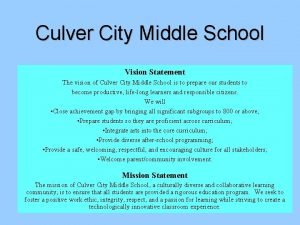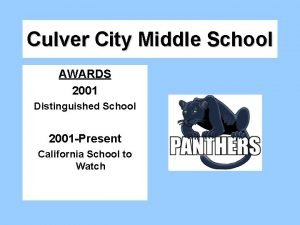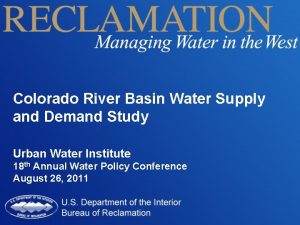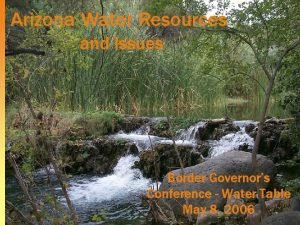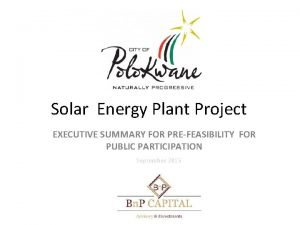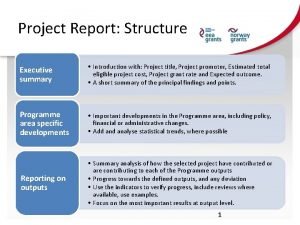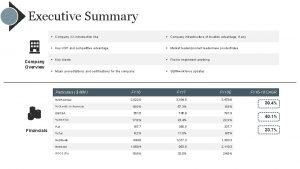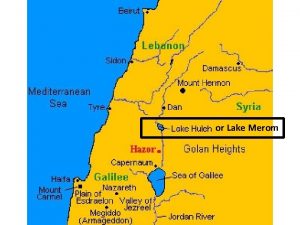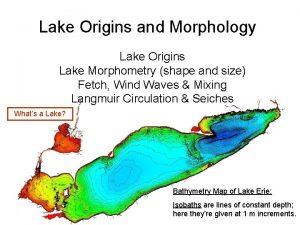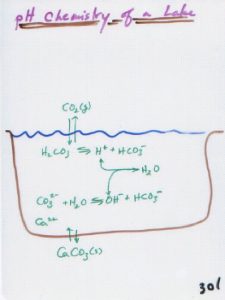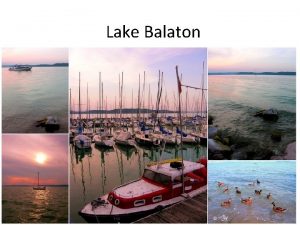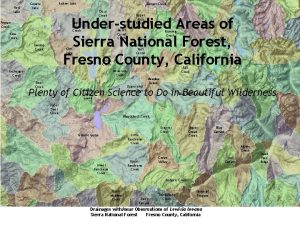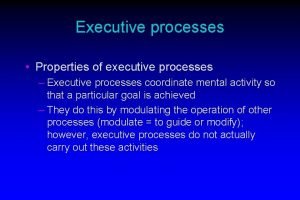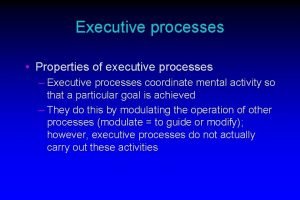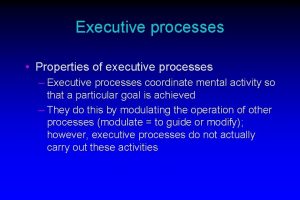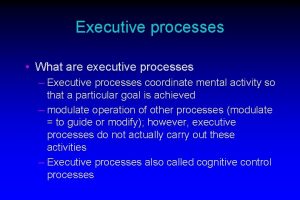CULVER LAKE 2016 Executive Summary of Lake Monitoring


























- Slides: 26

CULVER LAKE 2016 Executive Summary of Lake Monitoring Program Observations

CULVER 2016 -PROFILE DATA Thermal Stratification persisted past Sept 23, 2016 Thermal Stratification had set up by April 24, 2016

CULVER 2016 -PROFILE DATA

CULVER 2016 -PROFILE DATA

CULVER 2016 -PROFILE DATA The metalimnion (thermocline zone) was stable between 4 -7 m deep Although stratification began in April, several deep mixing episodes occurred; more stable stratification began in late May and persisted through early October.

CULVER 2016 -PROFILE DATA Total surface-to-bottom RTRM varied between 350 -400 units June-August. RTRMMax was between 125 -150 units (a strong thermocline).

CULVER 2016 -PROFILE DATA Secchi transparency increased to a maximum of 10 ft in June, then gradually decreased to a low of 3. 9 ft in the end of August.

CULVER 2015 -CHEMISTRY RESULTS

CULVER 2016 -CHEMISTRY RESULTS

CULVER 2016 – ALGAE RESULTS May 18 th: Aphanizomenon spp. Gomphosphaeria spp. June 16 th: Aphanizomenon spp. Gomphosphaeria spp. July 20 th: Aphanizomenon spp. Chroococcus spp. Anabaena spp. Aphanocapsa spp. Gomphosphaeria spp. Lyngbya spp. Cyanobacteria were strongly dominant over the phytoplankton community from May through September. It is likely that the Diatom peak, crash, and “clear water phase” occurred before the May sampling (winter 2015 -16 was very mild, Spring growing season started very early). August 24 th: Aphanizomenon spp. Chroococcus spp. Anabaena spp. Aphanocapsa spp. Gomphosphaeria spp. Lyngbya spp. Microcystis aeruginosa September 23 rd: Aphanizomenon spp. Chroococcus spp. Anabaena spp. Aphanocapsa spp. Gomphosphaeria spp. Lyngbya spp. Microcystis aeruginosa Cyanobacteria genera present BOLD=over 3, 000 cells/m. L

CULVER 2016 – ALGAE RESULTS Diatoms were scarce between May and September (likely due to silica limitation). Diatoms may have bloomed earlier in the Spring (early growing season onset in 2016).

CULVER 2016 - ZOOPLANKTON RESULTS Although small-bodied cladocera and copepods were most abundant, it was very encouraging that Large-bodied zooplankton were persistent and reached a maximum density of over 7 animals per liter.

Aphanizomenon spp. Gomphosphaeria spp. Anabena spp. Lyngyba spp. Aphanizomenon spp.

Additional Data and Information, weather/climate patterns, etc.

Climate Change? What should we watch to anticipate water quality in the Summer and Fall? “Over the past decade, Winters have become more variable, severe or mild. Lakes and reservoirs of the Northeast are behaving more like the monomictic lakes and reservoirs further south (e. g. Carolinas) following mild winters with little or no ice-cover. How a reservoir or lake responds to the changing winter conditions depends on the nature of the specific lake-watershed ecosystem. ” Watch: • Average Temperature January-March • Date of Ice-Out (If Ice-Cover Developed) • Growing Degree Days (GDD) March 1, 15 and April 1, 15. • Then May - November • Development and Timing of Thermal Stratification • Timing and Duration of the “Clear Water Phase” after Diatoms • Timing, Extent, and Duration of Anoxia. • Monthly Rainfall, Leaf Fall and First Rainfall after Leaf Fall

Winters have been Variable * January 2017 was the warmest on record in CT, again. * Through November 8 Ireen August 30 Sandy Out 29 Halloween Snow School Roof Snow Rainfall Deficit, Very Low Reservoir Levels

Most rainfall events are less than ½ inch. The initial runoff contains the highest contaminant loads (first flush). Managing the first half inch of watershed runoff can reduce reservoir nutrient and contaminant loads.

10% Difference Growing Degree Days (GDD) For most plants, phenological development is strongly related to the accumulation of heat or temperature units above a threshold or base temperature below which little growth occurs.

Following Mild Winter Following Severe Winter Growing Degree Days (GDD) For most plants, phenological development is strongly related to the accumulation of heat or temperature units above a threshold or base temperature below which little growth occurs.

2011 -12 and 2015 -16 were Very Mild Winters 2016 Began even warmer than 2012 Late Spring Cold Dampened the Impact (Recall the Apple Blossom Kill in April 2016)

Layer or Hypo Aeration 500 GDD An April Cold Spell brought 2016 closer to normal by May 15 (killing apple blossoms) In 2012 and 2016 Growing Degree Days were a Full Month Ahead on April 1 Iceout 10 GDD Activate Circulation 75 GDD

Winter Weather Pattern can alter Seasonal Phytoplankton Succession 4000 Diatoms 3500 Bluegreen Cyanobacteria Greens 3000 Cyanobacteria 2500 Cells / ml (See: Kortmann, 2015) Akinetes begin to germinate 2000 1500 1000 500 0 January Diatoms crash when Silica < 0. 5 mg/L or when Temp > 15 Co February March When the Growing Season begins early there is a shift in seasonal phytoplankton succession. April May 1 Month June July August September October November December With an Early Growing Season Start: • Diatoms Crash early, Cyanobacteria have more time to grow. • Thermal Stratification is prolonged, longer duration of deep anoxia, more internal loading of ATEAs and Nutrients.

Phytoplankton = Eukaryotic Algae and Cyanobacteria When the Growing Season begins early there is a shift in seasonal phytoplankton succession Spring Diatom productivity can be enhanced and prolonged by artificial circulation and maintaining silica availability Potential Management Approaches : • Activate Circulation and Hypolimnetic/Layer Aeration Systems by “Target Degree Days”

Climate Change? Are Reservoir Conditions Changing and What Might It Mean to Water Quality Management “Over the past decade, Winters have become more variable, severe or mild. Lakes and reservoirs of the Northeast are behaving more like the monomictic lakes and reservoirs further south (e. g. Carolinas) following mild winters with little or no ice-cover. How a reservoir or lake responds to the changing winter conditions depends on the nature of the specific lake-watershed ecosystem. ” Generalizations: Large and Deep Reservoirs and Lakes: • Early and Extended Duration of thermal stratification results in more deep anaerobic respiration • Higher concentrations of Anaerobic Respiration Products (Fe, Mn, Sulfide) • More Internal Nutrient Loading (P, N) • Early Phytoplankton Succession from Diatoms to Greens to Cyanobacteria • More time for development of Phytoplanktonic Cyanobacteria Blooms • More Cyanobacteria akinetes deposited for subsequent years Smaller Reservoirs and Lakes with a Large Bottom Area within the Trophogenic Zone: • Early growth of Littoral Macrophytes (“weeds”) and Benthic Cyanobacteria • In reservoirs, water level fluctuation often limits rooted vegetation; favors benthic algae

2017…so far. • Winter 2016 -17 began as a typical winter, with cold temperatures in December and early ice-cover. • Then came a January Thaw that lasted all month. In many Connecticut Lakes ice-out occurred on about 1/20/2017. To be seen if ice-cover returns at all in February, but it will not be a continuous ice-cover winter. • The Spring Diatom Peak is likely to be early. Enhancing Spring Diatoms by artificial circulation can reduce Cyanobacteria later in the Summer. • Watch the progression of Growing Degree Days beginning March 1, 2017 to anticipate what Summer might have in store for your Reservoir or Lake.

Fluorometry CULVER 2016 -OPTICAL SUITE RESULTS
 Timberline high school
Timberline high school Annie leibovitz queen elizabeth
Annie leibovitz queen elizabeth Diowa
Diowa Beth culver
Beth culver Culver city parks and recreation after school program
Culver city parks and recreation after school program Oligotrophic vs eutrophic lakes
Oligotrophic vs eutrophic lakes Lake powell and lake mead
Lake powell and lake mead Lake powell and lake mead
Lake powell and lake mead Social media executive summary example
Social media executive summary example Executive summary for solar project
Executive summary for solar project Project report executive summary
Project report executive summary Four obsessions of an extraordinary executive summary
Four obsessions of an extraordinary executive summary Mission and vision of cupcakes business
Mission and vision of cupcakes business Executive summary for a salon
Executive summary for a salon A short document
A short document Smartphone swot analysis
Smartphone swot analysis Executive summary vs introduction
Executive summary vs introduction Executive summary startup template
Executive summary startup template Executive summary presentation
Executive summary presentation 4 parts of business plan
4 parts of business plan How to end an executive summary
How to end an executive summary Sip executive summary
Sip executive summary Executive summary esempio
Executive summary esempio Winning executive summary
Winning executive summary Canvas model word
Canvas model word Purpose and scope example
Purpose and scope example Executive summary for e commerce project
Executive summary for e commerce project
